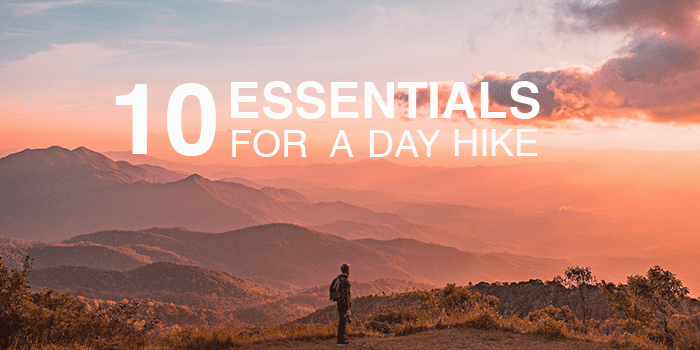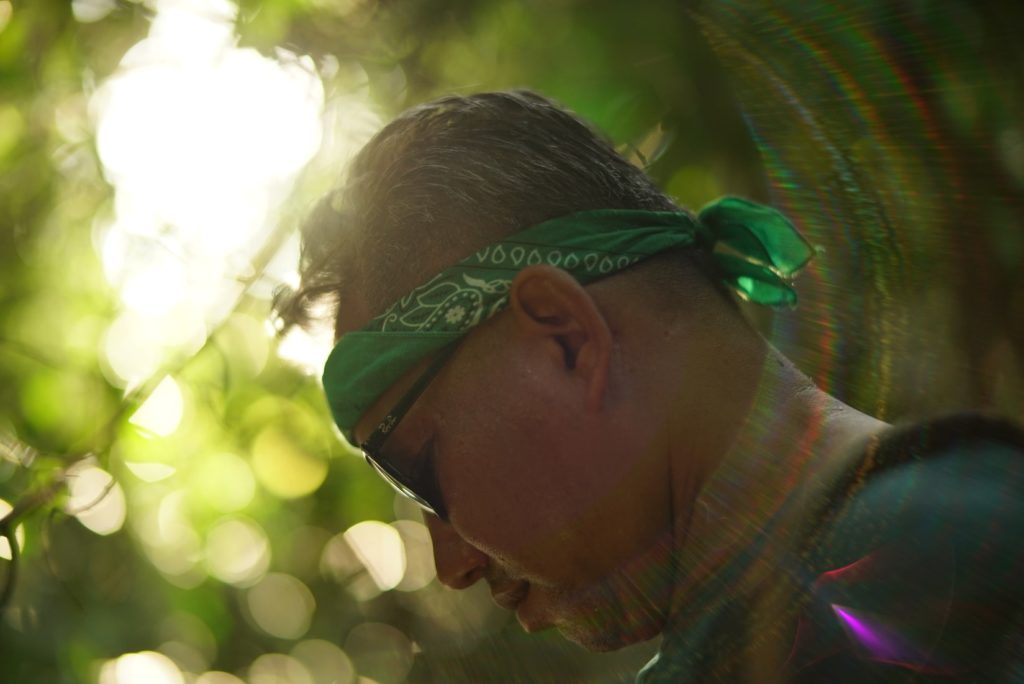 5-star Fitness
5-star Fitness
 5-star Fitness
5-star Fitness

Whether it’s bright and sunny or cold and rainy, hikes are always fun… as long as you’re prepared! It’s pretty common to think that just having a bottle of water is enough, especially if the hike is one you’ve done tons of times before, or you’re at a location you consider safe- like a National Park. The feeling of safety is no reason to be unprepared for the worst situations.
Often times, we forget that, well… we’re human! We trip, we fall, we bleed, we break, we panic. We make mistakes, and sometimes those human mistakes can turn an easy hike into a serious occasion. Even the easiest hike can become treacherous once a sprained ankle happens, or someone runs out of water on a particularly hot day. Even a delayed start time can cause issues- I was once in Zion hiking Angels Landing (One of the most dangerous hikes with sheer cliffs you can easily fall off if not paying attention or can’t see) where someone started the hike too late and had to find their way back down the steep three miles of rocky paths and sheer drop-offs to camp in the pitch dark because they forgot a headlamp!
The simplest devices can save your life, and nature is wild and unpredictable. It’s always important to be as prepared as possible! Here are 10 essentials for a day hike that are standard in any pack in case of emergency. Remember, we are human and accidents DO happen.
1. Day Pack (Back-Pack)
Simple, you’ll need a bag to carry all of your essentials. The pack doesn’t need to be anything fancy, a basic backpack will do the trick. But, if you have one with customizable, padded shoulder, chest, and waist straps your hike will be a lot more enjoyable! A pack with a side pocket to hold a water bottle, or with a water bladder, can save you time and energy from having to swing your bag around and dig to find what you need.
2. Tools for Navigation
Navigation? Just follow the path?!
Just kidding… While there are designated trails to follow when hiking it is not uncommon to take a wrong turn, or for the path to seemingly disappear altogether thanks to Mother Nature and all her natural talents (weather, animals, people, erosion, etc.).
So, what do you do? Bring a map! Most staffed parks will offer maps for free, and you can always print out a map at home beforehand. This could make it easier to plan your hike if there are multiple trail split-offs or if you’re going with a larger group of people consisting of faster or more advanced hikers and some who like to take their time. If you need to, you can download a map onto your phone and save it to your pictures so you don’t drain your battery- but honestly, your phone should be saved for emergency calls or an emergency flashlight. If you really want to rely on your phone you should bring an external battery booster.
While you may feel you can depend solely on your phone for GPS, it’s more common than not to lose service while hiking. If you do get service, it’s possible your phone could die. Depending on it simply isn’t the best choice.
Another handy tool to have on hand is a compass, as long as you really know how to use it!
If you feel the need you can go all out and bring a GPS receiver! These are more commonly used for more intense, longer, multi-day hikes and backcountry camping.
Whichever you chose, keep an eye out for landmarks and make a mental note or jot them down on your map for reference points in case you do get lost.

3. Sun Protection
First, no matter the weather… WEAR SUNSCREEN.
Raining, foggy, or cloudy- doesn’t matter. You can never depend on the weather to be consistent, and wearing sunscreen isn’t going to do you any harm, but forgetting it certainly will.
Apply your sunscreen BEFORE the hike so you’re not trying to apply it to a sweaty neck. You need to give it time to absorb into the skin… and don’t just wear sunscreen, bring it with you. One layer won’t be enough for a 5-hour hike, let alone a full day-hike.
One thing my father taught me to remember is that the sun in the cloudy morning at home is the same sun that burned you while on vacation in Hawaii- it doesn’t discriminate against anyone, and it can be pretty sneaky. You need to apply sunscreen and have it with you to reapply as necessary. Remember to get the tops of your ears, your nose, your lips, and even the part in your hair if you forgo a hat! The skin on your lips is very thin and sensitive, and no one wants sunburnt lips. You can use chapstick that has SPF in it to keep your smackers safe. You can also bring a buff or bandana to keep your neck and face safe from wind burn and sun!
Don’t forget your sunglasses either, even if you plan on being in a dense forest all afternoon, bring them with you. Your eyes are sensitive, and blinding yourself isn’t going to do you any favors.
Bring a hat… just bring it. The hat will help to protect your face and eyes from the sun, rain, and even the wind. If you don’t feel like wearing it for a while you can always throw it in your pack.
4. Insulation
I know, packing for insulation in August in Southern California sounds insane. It’s already 80 degrees by 8 A.M. and you’re asking yourself why you wore long pants/leggings instead of shorts… but, as the saying goes, “better safe than sorry”. We recommend starting the day in layers so you can peel off each layer as you get warmer and warmer. If you have a lighter weight fleece or down jacket you can easily store it in the bottom of your pack and forget about it. If you get stuck in an emergency situation or find yourself needing to stay warm, you’ll be happy! You know you’ve been there, on the long day hikes that are hot, hot, hot the entire time… except on the way down when everything is shaded and the cool breeze blows through and you would give anything for a sweatshirt and hot cocoa. Those are the times I’ve been happiest to have my thermal layer and windbreaker to keep me warm until getting back to camp, or the car. You will be, too!
Bandanas are definitely recommended, there are tons of reasons to bring and wear a bandana. Some people wear them on their head to help prevent ticks and bugs, and others will wrap a wet bandana around their neck to help keep them cool. When it’s windy you can use a bandana as a buff to keep blown dust from caking your face and preventing wind burn- yes, it’s a real thing and it sucks. By the way- buffs are totally worth it. They work way better than bandanas as they cover your entire neck, ears, and face… Plus they can always be scrunched together and used as a headband to keep the hair and sweat out of your face!
5. Light
Always having a light with you is a good idea. Perhaps the only reason you need it is that you get distracted during your hike and the day suddenly turns into night, and there you are stuck with our crappy human night vision… or maybe something a bit more alarming happens. Either way, you’ve got to be prepared. A small yet strong flashlight is easy to pack as it barely takes up any space. Headlamps are even better, they usually come with different light settings and allow you to keep your hands free in case you fall or need to use the to help a friend.
6. First Aid
You can easily purchase a pre-packed first aid kit, but it’s important to know what it comes with and add extras if you need to. A space blanket, band-aids, hand sanitizer, ankle wraps, gauze, anti-histamines, and some ibuprofen are great add-ins and can really turn an emergency situation into something more easily handled. Make sure you bring this with you… keeping your kit in the trunk of your car won’t do you any good if you or someone else has been injured miles away from where you parked.
7. Tools
A pack of waterproof matches, a utility knife, and duct tape can do wonders- like helping you create a shelter and a fire for the night, creating a splint, covering wounds, or even just mending your pack if it tears. You can do no wrong having these. At the very least take a knife… one of the happiest moments I’ve had is using my pocket knife to help me open a can of beans I brought with me for dinner while backcountry camping. It’s the little things that make the biggest impact.
8. Snacks
Pack lightweight, nutrient dense snacks to help fuel and keep you satiated. A baggie of trail mix, some protein or granola bars, and even nut-butter packs will keep your energy up and provide you with healthy fats, fiber, and protein to keep hunger at bay. I tend to pack myself a PB&J for longer hikes, and it makes a world of difference. Throwing in a few extra bars couldn’t hurt, especially if you get stuck for a long while or someone else forgets to pack the essentials.
9. Water
First of all- hydrate BEFORE you start your hike. You should start drinking more water at least a day before your hike. This will help to keep you hydrated and your body functioning properly. If your hike is at 8 A.M. be sure you get at the very least two cups of water in you before you even leave for your hike. Your body needs two cups of water every morning anyway after fasting for a full night of sleep, so if you don’t start drinking until you’re on your hike… well… you’re too late and setting yourself up for dehydration. Pack lots of water, at least a bottle for every hour you plan on spending outdoors, plus one or two more for emergency or extreme heat conditions. While your pack will feel heavy in the beginning, the more you drink water your pack will get lighter and lighter, and the easier the trek back to your car will be. There are few things worse than heat exhaustion and dehydration… stay safe and drink up!
10. Emergency Shelter
If you are planning on going deep into the wilderness or backcountry camping, this is vital. You can grab a tarp or emergency shelter at any outdoor equipment store. This is a great tool to have and packs up super small and lightweight. Otherwise, you could use your space blanket (from your first aid pack) or pack a large heavy duty garbage bag. This could help to keep you dry if it ever happened to rain… and if you don’t end up using the trash bag… you could always use it as a trash bag!
Remember to re-stock your pack after every trip, and check expiration dates and batteries every six months to be sure you’re always prepared.
Hope this helps- let the adventures begin!